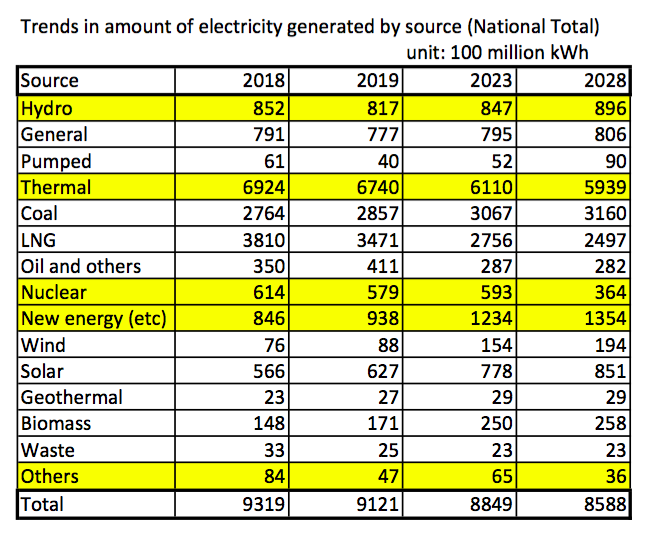Nuclear Power and Coal-fired Power will Hamper Japan’s Shift to a Carbon-free Society
~Our response to the governmental panel’s proposal on Long-Term Growth Strategy under the Paris Agreement~
CNIC Statement, 16 April 2019
The Paris Agreement calls on all parties to combat climate change, and requires them to submit Nationally Determined Contributions (NDC) to the United Nations by the year 2020. These must specify their long-term strategy to reduce greenhouse gases and to achieve economic growth at the same time. The Japanese government aims to announce its long-term strategy before the G-20 Summit is held in Osaka in June 2019. The governmental panel on the Long-term Strategy under the Paris Agreement as Growth Strategy held a meeting in the Prime Minister’s Office on April 2, and released its proposal on Japan’s long-term strategy.
The recommendation said the long-term strategy should contribute to joint efforts to limit the global temperature increase to 1.5 ℃ as stipulated in the Paris Agreement, and should contain ‘disruptive innovations’ for creating a virtuous cycle of the environment and growth. In addition, the proposal said the strategy should include ‘ambitious visions, speedy measures and promotion of a shift to a desirable society.’
The ‘ambitious visions’ mentioned in the government’s proposal, however, are nothing but (1) a plan to cut greenhouse gas emissions by 80% by the year 2050 from the FY2013 level, (2) the ‘disruptive innovation’ to remove CO2 from coal-fired power generation by using Carbon Capture, Utilization, and Storage (CCUS) technology, and (3) to create a hydrogen-energy based society by 2050. If these measures alone are taken, it would be impossible to achieve the goal of 80% reduction of greenhouse gas emissions from the FY2013 level by the year 2050, and to limit global temperature increase to 1.5 ℃ by that time. It seems that the ‘disruptive innovation’ is the government’s excuse for its wish to maintain the status quo.
This deceptive, illusionary proposal has stemmed from the government’s traditional policies on nuclear power and coal-fired power generation. Since the 1990s, when reduction of CO2 emissions was taken up on the global political agenda, the government has tried to address this issue by simply promoting nuclear power generation. As a result, the amount of Japan’s CO2 emissions continued to rise.
The government plans to reduce the share of nuclear power generation in the energy mix to 20%-22% by the year 2030, and increase that of coal-fired power generation, to 26%. (As of 2010, the share of nuclear power generation accounted for 29% and that of coal-fired power generation, 25%) To achieve this goal, the government is poised to maintain both nuclear-power and coal-fired power generation, and has worked out plans to establish exchange markets for generation capacity, base load power, and non-fossil fuel value for nuclear power generation.
Despite the government’s plan, only nine nuclear reactors are currently operating as of April 2019, although 54 were operational before the devastating nuclear accident occurred at the Fukushima Daiichi Nuclear Power Station in 2011. Of the off-line reactors, the operators of 21 units have decided on or are considering decommissioning the reactors. As for eight units of the remaining reactors, operators have yet to file applications for the official review and inspection for checking conformity to the new regulatory requirements. What does the government think about this situation? It is obvious that the government will not be able to achieve the target of expanding the share of nuclear power generation in the energy mix to 20%-22% by the year 2030. Meanwhile, antiquated coal-fired power plants may be decommissioned after operating for 45 years, but even so, coal-fired power generation’s share would exceed the target level substantially. Even if the share of renewable energy increases and makes up for the reduced share of nuclear power generation, the CO2 emissions from power generation would surpass the current level considerably.
The reduction of CO2 emissions should be achieved by developing a number of technically feasible technologies that can actually be introduced. The development of technology that may or may not become possible in the future should be considered as an additional, extra step. It is certain that a long-term plan based on the policy of techno-mania and wishful thinking will collapse. What is needed right now is a long-term plan that reflects the public opinion against nuclear power generation and is compatible with the current situation where it is impossible to restart many nuclear power plants. In other words, the plan should feature the disruptive innovation of the full-scale introduction of renewable energy.

